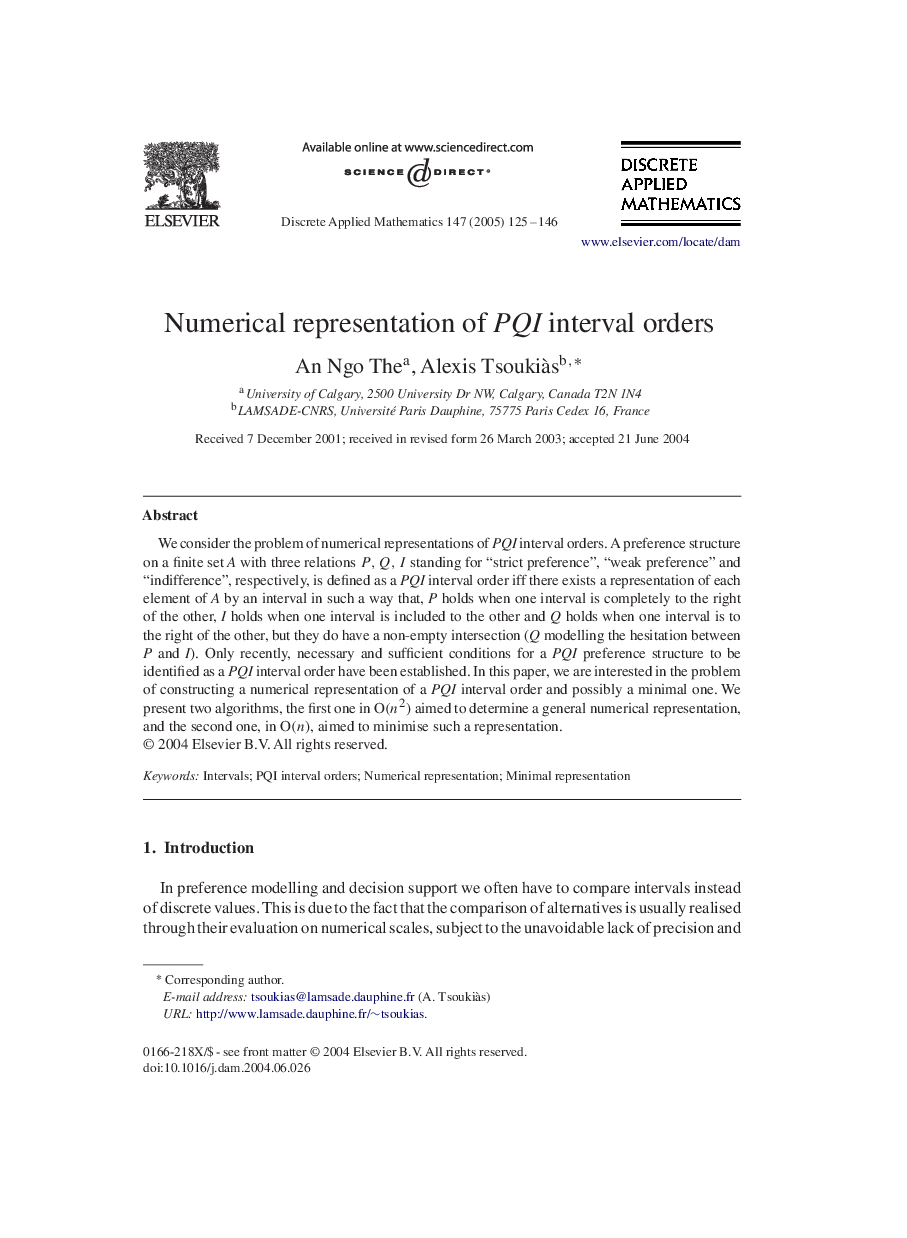| Article ID | Journal | Published Year | Pages | File Type |
|---|---|---|---|---|
| 10328314 | Discrete Applied Mathematics | 2005 | 22 Pages |
Abstract
We consider the problem of numerical representations of PQI interval orders. A preference structure on a finite set A with three relations P,Q,I standing for “strict preference”, “weak preference” and “indifference”, respectively, is defined as a PQI interval order iff there exists a representation of each element of A by an interval in such a way that, P holds when one interval is completely to the right of the other, I holds when one interval is included to the other and Q holds when one interval is to the right of the other, but they do have a non-empty intersection (Q modelling the hesitation between P and I). Only recently, necessary and sufficient conditions for a PQI preference structure to be identified as a PQI interval order have been established. In this paper, we are interested in the problem of constructing a numerical representation of a PQI interval order and possibly a minimal one. We present two algorithms, the first one in O(n2) aimed to determine a general numerical representation, and the second one, in O(n), aimed to minimise such a representation.
Related Topics
Physical Sciences and Engineering
Computer Science
Computational Theory and Mathematics
Authors
An Ngo The, Alexis Tsoukià s,
